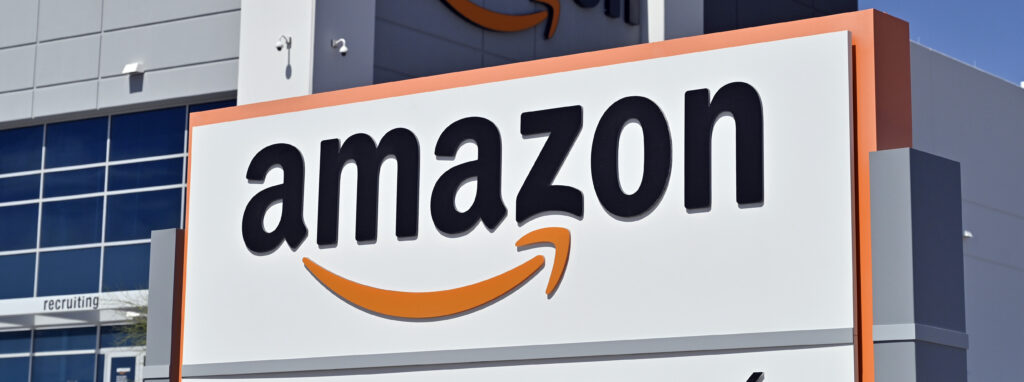Amazon’s cutting-edge technology and sturdy infrastructure are major factors in the company’s success. To optimize processes and cut costs, the company has substantially engaged in automating various elements of its operations, from warehouses and shipping to customer service.
Amazon Revenue Model – A breakdown on how Amazon makes money
After dropping to $110.8 billion in Q3 2021, Amazon had a 15% increase in net sales to $127.1 billion in Q3 2022. There have been failures in the retail e-commerce industry in 2022.

According to Amazon’s most recent quarterly report, the “other” segment’s revenues increased by 168% year over year to $1.26 billion in Q3 2022. In its quarterly reports, Amazon revenue model defines this division as sales related to various other offerings, such as certain licensing and distribution of video content and shipping services and co-branded credit card agreements.
Overview of Amazon’s Business Model
Amazon’s business model can be categorized into several different segments. The primary segments include:
- E-commerce Platform
- Amazon Web Services (AWS)
- Subscription Services (Amazon Prime)
- Third-Party Seller Services
- Advertising
- Physical Stores
- Hardware Products (Kindle, Echo, and more)
Retail Ecommerce Sales: The core of Amazon revenue model revolves around its online marketplace. Retail sales account for the majority of Amazon revenue model, with the company earning money through a combination of sales commissions, listing fees, and fulfilment services.
Amazon Prime: Launched in 2005, Amazon Prime has become a significant revenue source for Amazon while simultaneously fostering customer loyalty and driving additional sales through its ecosystem.
Amazon Web Services (AWS): AWS is Amazon’s cloud computing division that provides a variety of services, such as computing power, storage, and databases, to businesses and developers.
Advertising: Amazon’s advertising business has experienced rapid growth in recent years, as it offers targeted advertising solutions to brands and sellers looking to promote their products on the platform.
Subscription Services: In addition to Prime, Amazon offers several other subscription-based services, such as Kindle Unlimited, Amazon Music, and Audible to supplement the Amazon revenue model.
Hardware Products: Kindle, Echo, and Beyond
Amazon’s hardware products, such as the Kindle e-reader and Echo smart speaker, have also contributed to the company’s overall success.
How to generate revenue like Amazon from an Ecommerce Marketplace
There are some things to keep in mind while launching an online ecommerce marketplace like Amazon.
Adopt a strategy focused on your customers
Every company, no matter what industry they operate in, benefits from putting the consumer first. Amazon has built its reputation as one of the most customer-centric businesses on the basis of this philosophy.
Respond to consumer needs with new products
The consumer market is extremely fluid, and the demands of consumers are ever-evolving. Therefore, it is crucial for an online store to have goods that are in line with current market trends and consumer preferences.
Amazon holds the view that in order to maximize profits, it is crucial to stay abreast of shifting consumer tastes.
Use Market Research to improve customer engagement
It is pragmatic to spend money on market research to learn about customer preferences. Amazon has spent over $42 billion on R&D so far this year. Amazon thinks that catering to individual tastes can improve the user’s overall purchasing experience and boost consumer happiness.
Grow your company’s presence over time
Amazon has branched out into new markets with the help of AWS, Kindle, Alexa, and other products. In addition, Amazon Web Services generates substantial income all by itself.
The tech industry is continually changing, and it’s important for online retailers to keep tabs on not only competing industries but also their own (i.e., e-commerce).
Diversifying your business and gaining loyal customers will be much easier if you keep up with the latest trends in emerging markets.
Make use of new ideas to attract the consumers
A company’s survival and continued success depend on its ability to innovate. Companies are employing novel approaches because they see the growing importance to customers of getting their money’s worth.
In order to keep clients and attract new ones, companies need to innovate and adapt to the ever-changing landscape of online commerce.

Key takeaways from Amazon Business Model and Monetization Channels
Amazon’s business model is centered on providing a seamless and convenient shopping experience for consumers while offering a vast selection of products at competitive prices.
Two-Sided Marketplace: Amazon operates a two-sided marketplace that connects third-party sellers with consumers, allowing for a wide range of products to be offered from various categories. This enables Amazon to expand its product selection without directly managing inventory.
Revenue Streams: The company generates revenue through multiple streams, such as sales commissions from third-party sellers, subscription fees from Amazon Prime members, and sales of its products and services.
Short-term Liquidity: Amazon maintains short-term liquidity by receiving payments from customers before paying suppliers for products, effectively managing its cash flow.
Technological Infrastructure: Amazon has invested heavily in its technological infrastructure, including warehouses, data centres, and logistics networks, to ensure efficient delivery of products and services to customers. Now Amazon can offer fast and reliable shipping options, enhancing customer satisfaction.
Customer-centric Approach: Amazon’s customer-centric approach has allowed the company to build a loyal customer base and continually improve its offerings based on customer feedback. This has helped to grow the Amazon revenue model better.
Building an Ecommerce Marketplace like Amazon
Many companies are looking at Amazon’s marketplace as a model for creating their own ecommerce websites. However, like Amazon, other businesses need to make the proper decision when choosing a platform if they want to achieve similar levels of success.
Making an ecommerce mobile application
The adoption of mobile applications has increased dramatically during the past several years. The ecommerce app category is one of the most popular and lucrative in the app economy.
Most users favor ecommerce apps because they load quickly, run well, and provide a satisfying experience overall. This has led several online stores to create apps for mobile devices in addition to their websites.
Your ecommerce marketplace needs a mobile app but first, you need to decide which operating system market to focus on. Depending on your company’s needs, available resources, and timeline, you can develop a native app or a cross-platform app.












